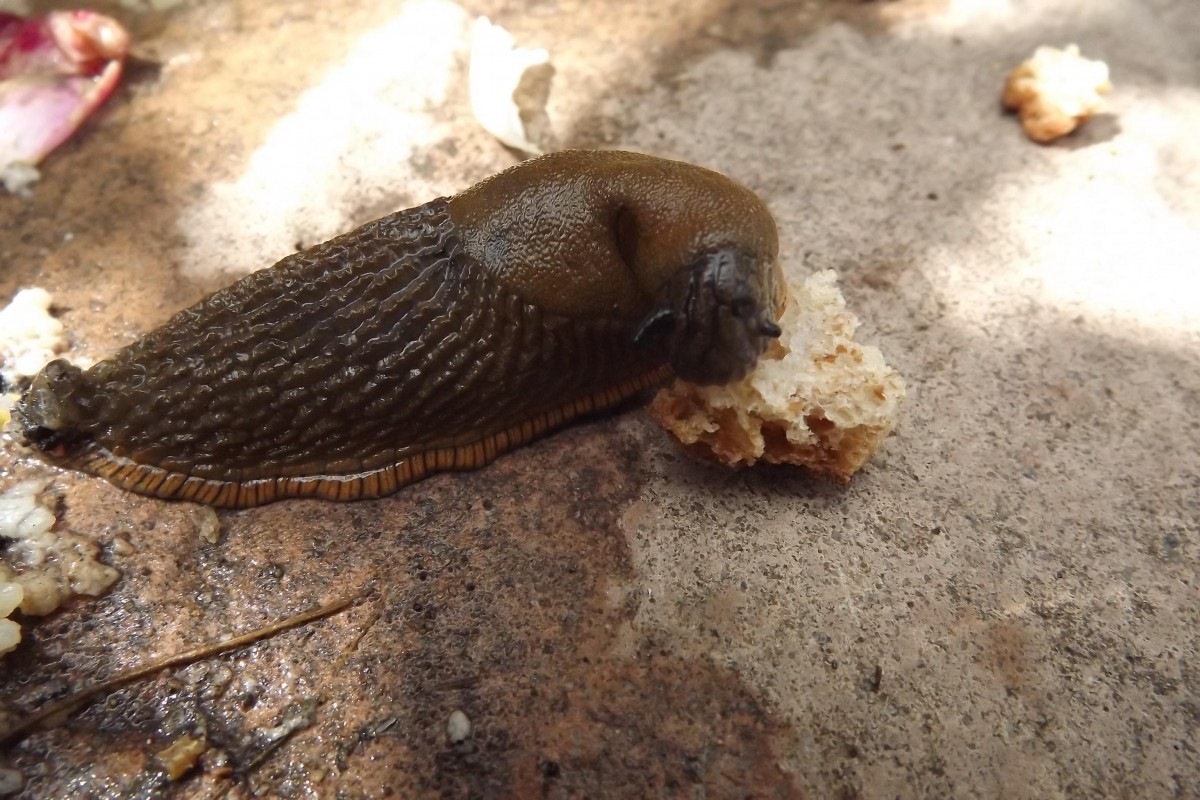Humans share a great deal of similarities with our chimpanzee cousins, including our use of stone tools, our love of fruit, and the fact we both pass the mirror test. But for the many ways we are strikingly alike, humans have one heartbreaking difference lurking in our brains: we develop Alzheimer’s disease, as no other primate can.
However, researchers have recently discovered the first signs of cognitive decline, similar to Alzheimer’s, in chimpanzees – an early stage that, for some mysterious reason, seems to progress no further. This self-limiting action, in so close a relative, may point to a way of avoiding Alzheimer’s in humans. And now scientists are looking at chimp brains for clues.
Researchers out of Kent State were granted full access to a bank of 20 brain samples, collected by the National Chimpanzee Brain Resource from chimps who had died naturally in captivity between 37 and 62 years of age. They looked for elevated levels of amyloid beta, a protein that breaks down quickly in healthy human brains, but doesn’t in cases of Alzheimer’s. Extra amyloid beta leads to an accumulation of plaques between neurons. Plaques cause another protein, tau, to collect into tangles that affects healthy brain cells, and hence, cognition.
“Interestingly, traces of amyloid beta were higher in chimp blood vessels than in plaques — that’s not what typically happens in humans. A build-up of amyloid beta deposits in the brain’s blood vessels does occur in humans (a condition known as cerebral amyloid angiopathy), but the predominant effect of amyloid beta in our species is the production of excess plaque. ‘This suggests that amyloid buildup in the brain’s blood vessels precedes plaque formation in chimpanzees,’ noted study co-author Melissa Edler.”
Amyloid beta’s presence in chimps’ blood instead of their brains might be an indicator of why they don’t seem to experience severe cognitive decline and we do. But the scientists on the team acknowledge that this tiny spark of possibility needs to be fanned into a flame with full research – that must be done in an ethical manner with the help of our furry brethren. Until then, the attempt to unravel the terrifying mystery of the human brain will continue.

We at DFC have had friends celebrating a couple birthdays recently, and I only just realized that it’s been a long while since any of us have blown out candles on a cake! I guess it’s something that grown ups don’t really do anymore, and I briefly felt sad about it — until I read about this new study, published recently in the Journal of Food Research. A group of scientists has determined that the act of blowing out candles on a birthday cake sprays the festive confection with a staggering amount of bacteria.
They did this by undertaking the most charmingly crafty experiment I’ve ever heard of, preparing:
“two test birthday ‘cakes’ made of Styrofoam which they then spread with real icing […] and decorated with exactly 17 candles. Before having volunteers blow out the candles on both cakes, they had all of them smell and consume a piece of hot pizza — ‘to simulate a meal-dessert sequence.’ Afterwards, they compared the amount of bacteria present on each cake surface, and then repeated the whole exercise three times”
This experiment found that not only was the natural bacteria population of these cakes increased by a whopping 1400%, but the range of the bacteria was increased by a factor of 100, by the force of the puff.
Thankfully, the scientists say, it’s not all bad. As we have learned from recent research into the population of healthy bacteria in our bodies — our microbiome — exposure to new bacteria, care of little Timmy’s overenthusiastic candle snuffing, can actually boost our immune systems. It’s when little Timmy’s sick, though, that the researchers warn us to skip the cake, and the cold.

We at DFC love it when science turns to our animal friends for answers to human problems. It keeps everything in perspective, reminding us that, after all, humans are animals too!
Now, researchers are looking to the elegant slug for insight into a new type of surgical adhesive. As we learned when looking into the adhesive properties of the octopus tentacle current adhesives are sometimes hard to stick to wet and/or irregularly shaped organs. But slugs are experts at creating mucus that keeps them stuck to all kinds of things.
A team out of Harvard has just published a paper in Science, building on a previous analysis of the mucus of Arion subfuscus, a slug common in Western Europe. The mucus has two key parts: polycations that create the physical bond between mucus and surface, and a matrix that can process stresses on that bond. The Harvard team, led by David J. Mooney, sought to replicate these two factors with artificial materials.
“[The] team created a stress-dissipating matrix from cross-linked polymers, polyacrylamide, and alginate. The researchers then coated the matrix with the polycation chitosan, which inserts itself into the matrix and produces an adhesive surface.
[…]The researchers tested the adhesive on pig skin, liver, heart, and cartilage and found that it was stronger than both cyanoacrylate (superglue) and a surgical sealant called CoSeal.”
The field is particularly excited by this adhesive’s success with closing wounds on the liver, a notoriously finicky organ to repair. Further development and testing will occur — slow and steady may yet win this race for medical achievement!

This month, we find ourselves in peak ice cream season, the most wonderful  time of the year! But ice cream has its hazards — including the dreaded brain freeze. We all know that when the mouth-chilling wave hits we need to go easy on the Tiger Tail or Superkid, but have you ever thought about how the physical process works?
time of the year! But ice cream has its hazards — including the dreaded brain freeze. We all know that when the mouth-chilling wave hits we need to go easy on the Tiger Tail or Superkid, but have you ever thought about how the physical process works?
Turns out, the complex network of nerves that cover our palates, that are usually so good at sending information to our brains about what’s just arrived in our mouths, are too good when it comes to relaying the cold from a bite of a frozen treat. Brain freeze — also known by its technical name, “sphenopalatine ganglion neuralgia” — is a textbook example of how those nerves process stimuli, and how referral pain appears in the brain in response. Dr. Kris Rau of the University of Louisville in Kentucky, as interviewed by NPR:
“‘Now on the roof of your mouth there are a lot of little blood vessels, capillaries.’ […]
The rush of cold causes those vessels to constrict.
‘And when that happens, it happens so quickly that all of those little pain fibers in the roof of your mouth — they interpret that as being a painful stimulus,’ Rau says.
A message is then shot up to your brain via the trigeminal nerve, one of the major nerves of the facial area.
The brain itself doesn’t have any pain sensing fibers, but its covering — called the meninges — does.
‘And of course all of those little pain-sensing fibers are hooked up to your trigeminal nerve,’ Rau says. ‘So the brain is trying to figure out what is going on. It knows there is something wrong, something that is painful and they don’t know exactly where it is.’
Sometimes, our brains are too smart for their own good — and so far ahead of us we can’t even tell them that the cone we’re enjoying isn’t a threat! But, ice cream season will soon be over; brain freeze aside, I will enjoy every scoop before winter comes our way.

I’m going to send this week’s article to my middle son Ben, a longtime Lego enthusiast. He’s just returned to Canada from a year working abroad. His job was so time – and attention-intensive, all the poor guy could do to unwind was invest in Lego sets that he obtained through retail therapy (he frequented Amazon.com). He would assemble them at the end of his trying days as a form of meditation, like raking the gravel in a Japanese garden. But to get them back here, he had to take them apart… So he may find the following adventure useful!
After a visit to Legoland in Denmark, where he witnessed patrons buying expensive sets, Jacques Mattheij had a brainwave. Lego has a high resale value, especially for some of the rarer sets and more complicated bricks. But a lot of it is resold in unsorted lots — at a much cheaper price that corresponds with how much of a pain in the neck it is to organize the bricks into something useful.
Mattheij wanted to build an AI that would do that for him, and by golly, he did. His sorting machine started processing the two metric tonnes (!) of Lego he bought off eBay by feeding it onto a conveyor belt through a hopper. This separated the bricks, and allowed the magnifying imaging camera to snap a pic and check the image against examples stored on a PC.
Once Mattheij worked the kinks out of the imaging and checking process, he had to teach his AI how to classify each brick. This was exceptionally difficult — at one point, Mattheij estimated that hand-labeling enough images for his AI to learn from would take six monthsof full time attention. After a bit of thought, Mattheij devised a work around; manually correcting only the images that the AI got wrong, and returning them to the learning pool.
“The first day I managed to label a starter set of about 500 assorted scanned pieces. Using those parts to train the net, the next day the machine sorted 2,000 more parts. About half of those were wrongly labeled, which I corrected. The resulting 2,500 parts were the basis for the next round of training. Another 4,000 parts went through the machine, 90 percent of which were labeled correctly! So, I had to correct only some 400 parts. By the end of two weeks I had a training data set of 20,000 correctly labeled images.
Mattheij reports that his Lego sorting machine just needs to learn a few more of the rarer pieces, and it’ll soon making a dent in the boxes of bricks that have filled his garage. Then, he can sell the sorted bricks for almost four times what he paid for them! Lego really brings out the ingenuity in its users — have fun, Ben!
As you likely already know, dear reader, we on the DFC home front live deep in the wilds of the Frontenac Arch Biosphere. Transitioning from suburban Toronto a couple years ago was a bit of a culture shock, but we’ve gotten quite comfortable with our new, more sustainable, digs! The only thing I still find myself concerned about, as someone who spent her whole life quietly supported by a municipal wastewater system, is our septic tank. There has to be something more environmentally helpful than a metal box under our back lawn that gets pumped out periodically by a big dieselly truck! And something a little, well, cooler than a standard composting waste system…
That is why I love this news from the University of the West of England, who, in partnership with Oxfam, is running a trial of a new kind of fuel cell: one that generates electricity from human urine!
The trial urinals have already shown they can generate enough power to light the bathrooms in which they were located. But there are further possible applications: In disaster situations, where portable toilets could provide lighting to help prevent accidents and assault, or could even charge a cell phone. And amazingly, a side effect of the electricity-generating process in these “microbial fuel cells” appears to kill pathogens in the waste water — which means toilets with these cells could someday prove a source of potable water as well.
disaster situations, where portable toilets could provide lighting to help prevent accidents and assault, or could even charge a cell phone. And amazingly, a side effect of the electricity-generating process in these “microbial fuel cells” appears to kill pathogens in the waste water — which means toilets with these cells could someday prove a source of potable water as well.
“This disinfection potential gave the UWE team an idea to systematically test how [microbial fuel cells] could be used to purify wastewater. For this, they picked one of the most important gastrointestinal pathogens, a strain of the Salmonella bacterium which causes typical food poisoning symptoms.
‘This species was introduced into an MFC cascade system treating human urine, to determine the anodic killing efficacy when operating in continuous flow conditions,’ the researchers write in the study.
When they checked the outflow at the end of the purification process to measure the remaining pathogen levels, they found just what they had hoped for – greatly reduced Salmonella counts.”
The Salmonella numbers were so reduced they actually fell under the “safe” level of conventional sanitation standards. This concept could be a game-changer: the team planned a further, profile-raising trial at Glastonbury Music festival that seems to have gone well. Worldwide, this could end up being the little can that could — thanks to science!